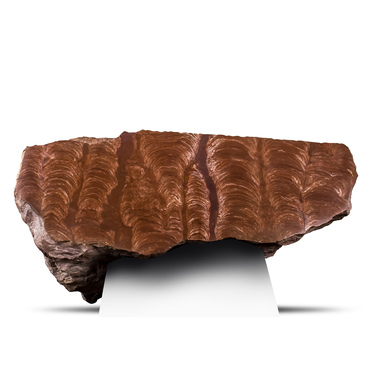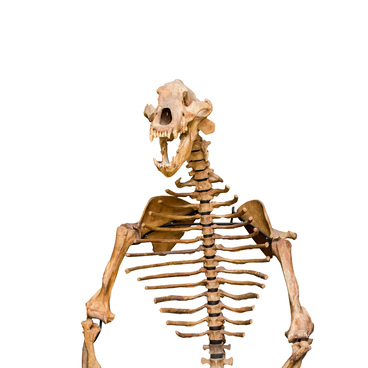Psittacosaurus is a relatively small herbivorous dinosaur of the Ceratopsian (horned faces) group. Psittacosaurus means parrot-lizard, as the jaws of the dinosaur resemble a beak of a bird. Henry Fairfield Osborn, president of the American Museum of Natural History, first described Psittacosaurus as a genus and named it in a scientific article in 1923.
These animals inhabited Asia between 100 and 130 million years ago. Presently, scientists find many fossils of psittacosaurs, including complete skeletons, in Russia, China and Mongolia. There are between eight to eleven species of Psittacosaurus. All of them are related to bipedal lizards (ones that walked on two legs), while the other two limbs served them as hands. With their help, dinosaurs could grab and hold food, for example, edible plants.
The species of Psittacosaurus differed in the structure of the skull and skeleton. The most famous of them, the Mongolian Psittacosaurus (Psittacosaurus mongoliensis), could reach 2 meters in length and weighed, as scientists suggest, about 20 kilograms. Unlike in other reptile species, the skull had an almost round profile. Both jaws had bony, beak-like outgrowths. The herbivorous dinosaurs could use them to crop stems of plants or thin branches of young trees. They had self-sharpening teeth; however, they did not have teeth suitable for grinding or chewing their food. Psittacosaurs were able to crush and grind their food by gastroliths — stones in their stomachs, which they swallowed on purpose. The number of gastroliths in the body of one dinosaur could reach 50.
Most of the Psittacosaurus body was covered in large and small scales, which were irregularly arranged. At the base of the tail was also a row of bristle-like appendages, about 15 centimeters in length. It is possible that the animals could use them to send signals to each other.
Psittacosaurs grew faster than most reptiles that lived with them at the same time, but slower than modern mammals. Juvenile psittacosaurs, at the age of three, could weigh less than a kilogram. The parents probably took care of them for a long time: paleontological evidence suggests that young psittacosaurs remained at the parental nest until their bones became stronger. However, they chewed their own food.
These animals inhabited Asia between 100 and 130 million years ago. Presently, scientists find many fossils of psittacosaurs, including complete skeletons, in Russia, China and Mongolia. There are between eight to eleven species of Psittacosaurus. All of them are related to bipedal lizards (ones that walked on two legs), while the other two limbs served them as hands. With their help, dinosaurs could grab and hold food, for example, edible plants.
The species of Psittacosaurus differed in the structure of the skull and skeleton. The most famous of them, the Mongolian Psittacosaurus (Psittacosaurus mongoliensis), could reach 2 meters in length and weighed, as scientists suggest, about 20 kilograms. Unlike in other reptile species, the skull had an almost round profile. Both jaws had bony, beak-like outgrowths. The herbivorous dinosaurs could use them to crop stems of plants or thin branches of young trees. They had self-sharpening teeth; however, they did not have teeth suitable for grinding or chewing their food. Psittacosaurs were able to crush and grind their food by gastroliths — stones in their stomachs, which they swallowed on purpose. The number of gastroliths in the body of one dinosaur could reach 50.
Most of the Psittacosaurus body was covered in large and small scales, which were irregularly arranged. At the base of the tail was also a row of bristle-like appendages, about 15 centimeters in length. It is possible that the animals could use them to send signals to each other.
Psittacosaurs grew faster than most reptiles that lived with them at the same time, but slower than modern mammals. Juvenile psittacosaurs, at the age of three, could weigh less than a kilogram. The parents probably took care of them for a long time: paleontological evidence suggests that young psittacosaurs remained at the parental nest until their bones became stronger. However, they chewed their own food.



